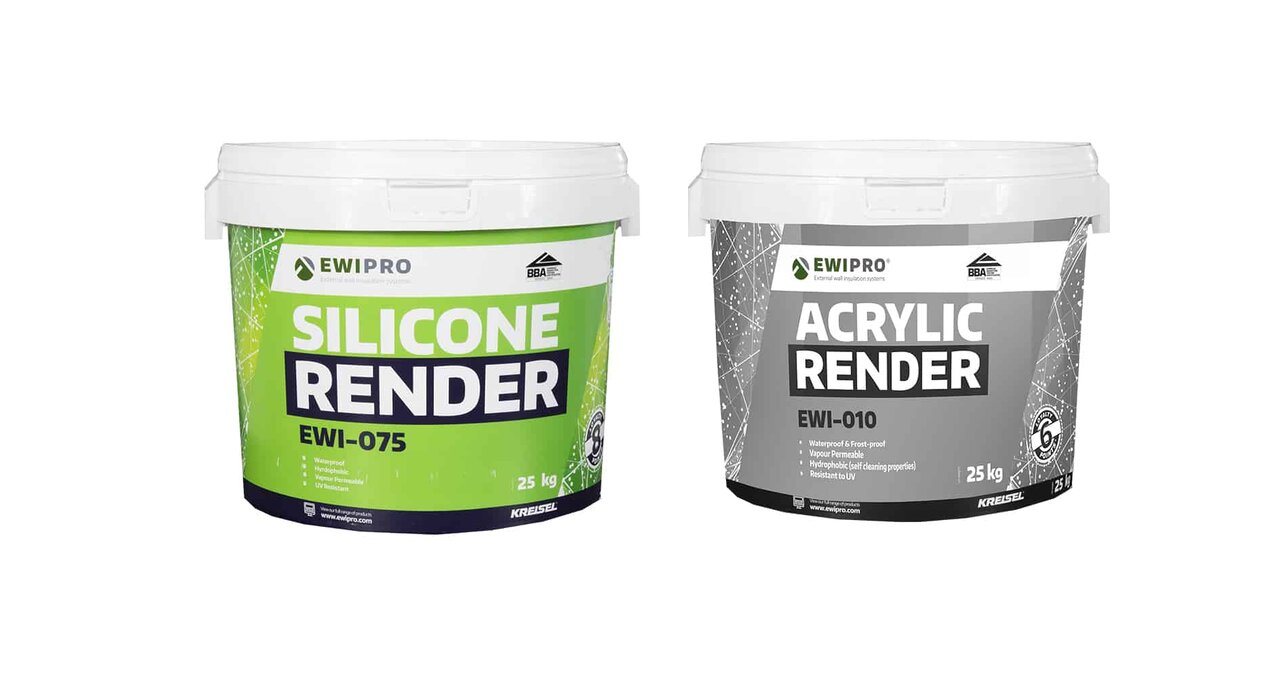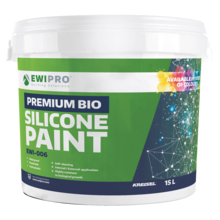
Estimated reading time: 3 minutes
Painting the outside of your property is a big decision. When considering your options, you might have come across several different types of paint. The two most popular external wall paints are acrylic-based and silicone-based.
But which is best?
In this blog, we’ll take a look at the advantages and disadvantages of both Silicone paint and acrylic paint. This way, you can decide on the best option for you in terms of Silicone Vs Acrylic paint.
Read on to find out more!
Pros & Cons of Silicone Paint
Silicone Paint is a high-performance silicone-based formula. Let’s weigh up the advantages and disadvantages of this type of paint!
Pros
- Highly breathable – This unique feature sets Silicone paint apart from other paints. It prevents dampness from building up in the building fabric.
- Highly flexible – means the surface of the façade will be less susceptible to cracking.
- Can be matched to Silicone Render. Read more here!
- You can use it on both interior and exterior walls.
- Highly water-resistant – making it suitable for areas of high rainfall, high humidity (e.g., bathrooms) and temperature change as it repels moisture.
- Easy to apply by brush, roller, or spray gun.
- Suitable for many different surfaces, including wood, concrete, metal, and stone.
- Thousands of colour variations.
Cons
- More costly than other paint alternatives.
- Gas permeable – can sometimes make metal substrates vulnerable to corrosion.
Pros & Cons of Acrylic Paint
Acrylic paint is a polymer-modified paint. It is the most common type of external wall paint on the market as it is easy to use, reliable, and widely available. Let’s find out a bit more about the pros and cons!
Pros
- Fast drying
- Easy clean
- Attractive finish
- Affordable
- Water-based
Cons
- Prone to cracking/flaking/bubbling on the surface due to water gathering in hairline cracks
- Limited colour options
- Paint darkens when dry.
- Low level of breathability so more susceptible to dampness – creating a knock-on effect and damaging the fabric of the building.
Silicone Vs Acrylic Paint
So, which is better: Acrylic paint or Silicone paint?
Having weighed up the pros and cons of each type of paint, we would recommend Silicone Paint as your go-to external masonry paint. Although it is slightly pricier than acrylic paints, the long list of benefits associated with it makes it worth the extra pennies.
Silicone Paint is long-lasting, highly water repellent, and flexible. However, one of its most attractive selling points is that it provides incredible levels of breathability. This means it is less prone to dampness and water ingress within the building’s fabric.
By comparison, acrylic paint is a cheaper option yet lacks lasting power through breathability, water resistance, and flexibility. Acrylic paint’s colour variations and brightness also don’t compare to the thousands that Silicone paint offers.
Therefore, we highly recommend opting for silicone-based masonry paint over acrylic-based.
View our full range of silicone paint here!

